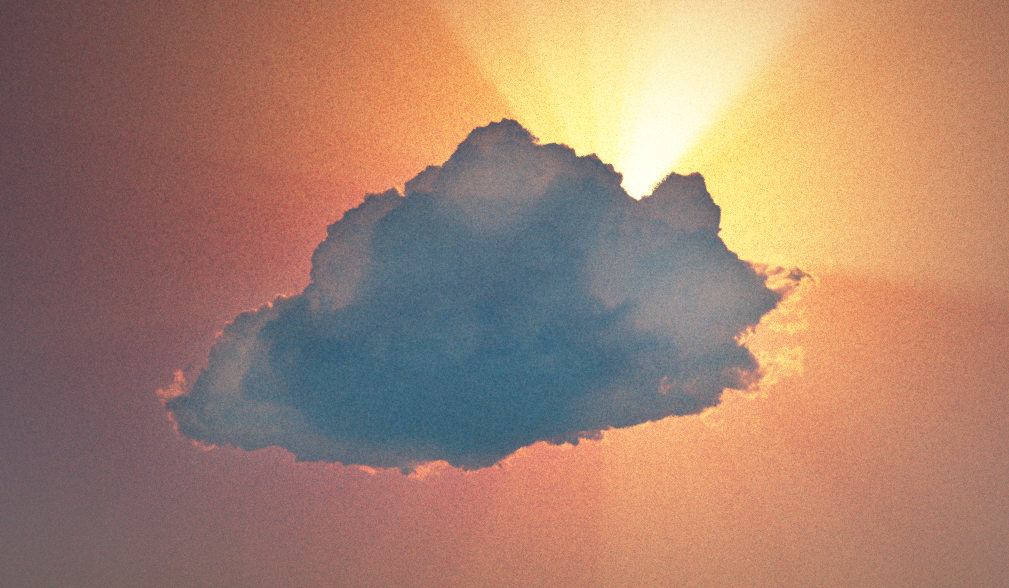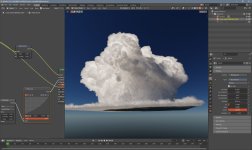Well, it's the node connector marked "volume" on the material output, soooo... even if it sounds kinky, I think I'll stick with itNow we are really confusing each other this late night, or morning over there? to add to the confusion.
Volume connector sounds kinky as wellprincipled volume shader in to the material output is probably the best naming
, or volume scatter shader.
Then again, you still have Air refraction, but it´s related to the temperature in the region, that is why we can see that hot waving air on the ground very hot summers, but otherwise generally there isn´t any Atmosphere refraction.
As mentioned above, but for volumetric atmosphere, you can´t use any IOR value, no such option with volumetrics..but if you go for mesh surfacing, so be it, I may look in to that more later, but it´s kind of more fun to have something more towards the real thing, and using truly volumetric clouds as well.
But that effect you spoke about with more increasingly transparence and fades towards the center of the volume, I think it can be don by simply changing anisotrophy values with the volume item, or volume material in blenders case.
You can actually use IOR if you connect the principled volume and a principled BSDF to a mix shader and then to the volume material output connector. I've done some experiments with it using the WDAS cloud.
I used the principled BSDF to add IOR and subsurface scattering. I can't state how much either is contributing as a defined value, but when I disconnect the principled BSDF and connect the principled volume directly to the volume material output connector, there was a very clear difference.
The effect I saw was that the streaming tail portions of the cloud became wispier towards their ends, and the cloud itself became softer at the edges.
Also, there was a very nice "godray" effect from behind the cloud with the light source on the opposite side.
Anyway.... I am certain that the same appearance and effect can be attained without using the Principled BSDF mixed in, but it was still worth an experiment.
I will definitely try adjusting the anisotrophy in the atmospheric volume!
Yes, I said VDB when I really meant mesh volume. I know that the VDB is a database file that contains the volume grid information and not a mesh, but I tend to think of VDB and volumes as the same thing, even though obviously the VDB doesn't have a mesh.Nope..I never said I used VDB`S for the planetary clouds I showed here, I only mentioned briefly that you may be able to experiment with that and embergen, since it has a
preset of jupiter already setup.
You were on the other hand mentioning that you used solidify on VDB`S ..so that was confusing since you can not do that.
So my setups is just a mesh sphere for planet surfaces not the shape sphere,.
Atmosphere is just a volume item, none pyroclastic mode, but without any "hypertexture"
Clouds the same volume item but with a texture obviousl, and completely different scatter settings.
Pretty much the same type of setup I am using, although I need to find a more detailed cloud texture map. The one I am using is a NASA cloud map. It has great detail, but the resolution isn't great. I may just need to search around for some higher resolution maps.
I would like to master embergen a bit more before trying fully spherical cloud layers, probably my machine won´t manage the level of detail and voxel resolution requried though.
Been messing these latest 2 hours with some cloud forming testing with various noises, pressure rates etc, seeking some science help for how clouds rise with pressure rates, buoyancy etc, but very hard to translate the descriptions in to embergen values.
Then again, if they (jangaFX) do Implement a fully scientificly model to get accurate cloud formings, then wheres the challenge and artistry and hard work go then?
Embergen was mostly designed to create fire and explosions and stuff..so you just tweak those settings and reduce fire, combustion and heat to minimum and use pressure rates, wind, and a little fractal noise for density as well, and maybe also fractal noise for force inputs as well.
I think Embergen misses some key functions though in terms of density emission, there are workarounds with fractal noise shapes..but not ideal, the fractal noise you add ass emission density also affects the movement of the cloud smoke rising, it shouldn´t be that way, or at least an option to turn it off.
I think Embergen is focused more on rapid pyrotechnic prototyping. I know they have introduced cloud presets and certainly Embergen should be capable of doing clouds, but I get the impression it's more in the vein of "We do awesome explosions and fire effects really fast and in great resolution... oh, and I guess we can do clouds too".
I still definitely want to get it, though


